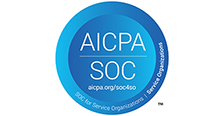
COVID-19
-
09/29/2020
COVID-19 Commonly Asked Questions by Employers
Client Alert
 Written by: Susan L. Swatski, Esq.
Written by: Susan L. Swatski, Esq.As employers re-open their offices and employees return to work in person, we have been receiving a number of questions, so we thought it would be helpful to provide you with a summary of the most commonly asked questions and our responses. Please keep in mind that these answers are intended to provide general information; employment laws are heavily nuanced and fact specific.
-
Self-Quarantine and Emergency Paid Sick Leave: If an employer requires an employee to self-quarantine after returning from a state that is subject to the travel advisory, the employee is not eligible for emergency paid sick leave. Only an employee subject to a government order to quarantine or an employee who has been advised to quarantine by a health care provider is eligible to receive emergency paid sick leave.
-
Disclosure of COVID-19: Employers can ask an employee how he or she is feeling, but employers may not inquire about a specific illness such as COVID-19 as that could rise to the level of a disability-related inquiry under the ADA. Also, employers may not tell employees if a co-worker has tested positive for COVID-19. The ADA privacy rules restrict the sharing of personal health information. However, employers must inform employees that possible exposure has occurred in the workplace without disclosing any identifying information about the individual who tested positive. If an employee discloses that he or she has been in contact with a person who tested positive for COVID-19, then the employer must consider whether the employee satisfies the definition of an “essential worker”. Essential workers who have had close contact with a person diagnosed with COVID-19 may continue to work as long as the employee is asymptomatic and protective measures are taken. This includes screening the employee each workday for fever and other symptoms, having the employee wear a mask and regularly disinfecting work areas.
-
Returning to Work Post a Positive COVID-19 Diagnosis: The CDC recently reported that people with mild to moderate COVID-19 remain infectious no longer than 10 days after their symptoms began, and those with more severe illness or those who are severely immunocompromised remain infectious no longer than 20 days after their symptoms began. In addition, at least 24 hours must have passed since resolution of fever without the use of fever-reducing medications before an employee should be allowed to return to work.
-
Requiring an Employee to go home: Employers may require employees who are exhibiting signs of respiratory illness to go home until they are symptom free. Employees can utilize their sick leave or PTO. Nonexempt employees who do not have paid leave available are not required to be paid for such absences, unless there is a collective bargaining agreement indicating otherwise. An exempt employee must be paid for partial-day absences, but may have his or her salary reduced for full-day absences due to sickness if the employer offers a paid sick leave benefit and the employee has exhausted that leave or is not yet eligible for the leave.
-
Doctor’s notes: Employers can require clearance from a health care provider prior to an employee returning to work, provided that the practice is consistently applied. However, the CDC suggests that employers remove such requirements during the pandemic because health care providers may be limited.
-
School Reopening Plans: Under the Families First Coronavirus Response Act (FFCRA), emergency sick leave and emergency expanded family leave availability is impacted based on whether a school is considered “closed.” The DOL recently clarified that if the school offers only remote learning, then the school is considered "closed" for FFCRA purposes and an employee may take emergency paid sick leave and or expanded FMLA leave. If the school requires full-time, in-person attendance, then the school is considered "open" and neither emergency paid sick leave nor expanded FMLA leave would apply. If the school requires partial in-person attendance and partial remote learning (hybrid plan), then leave under the FFCRA would apply only during the remote learning days when the employee is not able to work due to the need to care for his or her child. FFCRA leave would not apply to any in-person school days during which the employee chooses to keep his or her child at home while school is "open." If the school allows parents to choose between remote learning and in-person attendance, then the school is open and in-person instruction is available; therefore, FFCRA leave does not apply.
-
Intermittent Leave: The current guidance for FFCRA intermittent leave requires the employer and employee to agree to use leave intermittently for child care or school closures. However, the United States District Court for the Southern District of New York issued a decision on August 3, 2020, vacating that requirement. As a result, employers are on notice not to deny intermittent leave for child care reasons without consulting with an attorney.
If you are interested in conducting COVID-19 workplace safety training, please contact Susan L. Swatski, Esq. at sswatski@hillwallack.com; we are providing both in-person and virtual training.
©2020 Hill Wallack LLP. All rights reserved. Please contact Hill Wallack for permission to reprint. Notice: The purpose of this Client Alert is to identify select developments that may be of interest to readers. The information contained herein is abridged and summarized from various sources, accuracy and completeness of which cannot be assured. This Client Alert should not be construed as legal advice or opinion, and is not a substitute for the advice of counsel.
-


